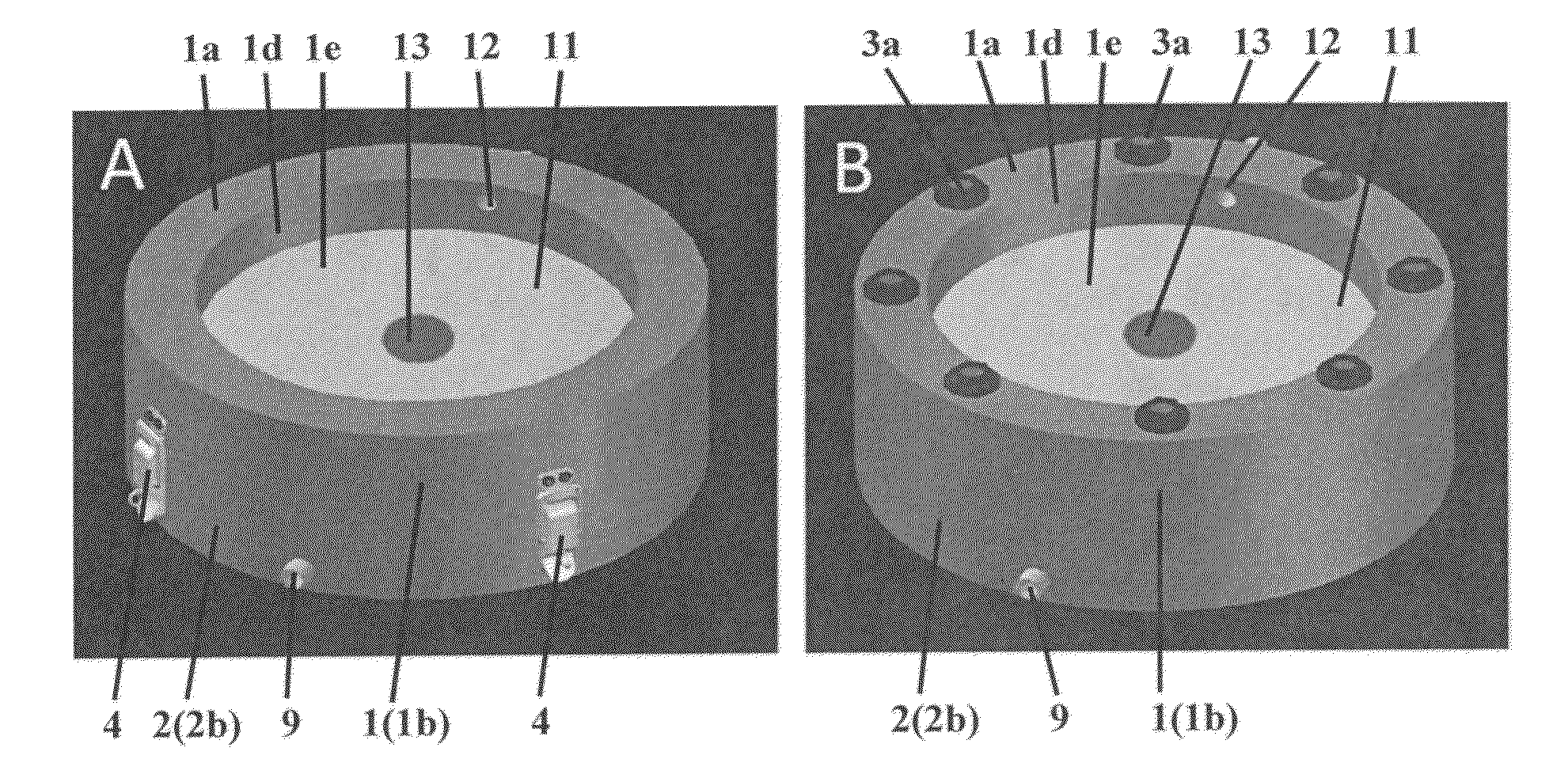Perfusion bioreactor
a bioreactor and cell technology, applied in the field of cell culture, can solve the problems of poor tissue formation, unsatisfactory clinical potential of current treatments for patients in need of complex skeletal reconstruction, and inability to grow centimeter-sized bone grafts for clinical translation
- Summary
- Abstract
- Description
- Claims
- Application Information
AI Technical Summary
Benefits of technology
Problems solved by technology
Method used
Image
Examples
example 1
Use of Bioreactors and Scaffolds to Engineer Large Bone Grafts
[0178]Computed tomography is used to generate anatomically accurate 3D models of traumatic or pathological skeletal defects. Digital models of skeletal defects are then edited using computer-aided design (CAD), and sliced off into pieces of adequate thickness, which allow effective engineering of functional bone tissue using perfusion bioreactors. The partitioned bone defect files are thus imported in computer-aided manufacture (CAM) software to drive the fabrication of geometrically defined biomaterial scaffolds using a combination of computer-controlled milling, rapid prototyping and casting technologies. The partitioned bone defect files are also used to drive the computer-controlled milling or 3D printing of customized perfusion bioreactors that can accommodate the cell / scaffold construct in a press-fit fashion under direct perfusion conditions (see FIG. 14, top panel). Patient-specific bone and blood vessel forming c...
example 2
Computer-Aided Design and Manufacture of Bioreactors and Scaffolds
[0179]Bioreactors and scaffolds provided by the invention can be designed and manufactured as described herein. In some embodiments, computer-aided design (CAD) and computer-aided manufacture (CAM) are used to design and manufacture the bioreactors and / or scaffolds. A person having ordinary skill in the art will appreciate that any other methods of designing and manufacturing may be used to generate bioreactors and / or scaffolds according to the present invention.
[0180]Digital models of skeletal defects can be created using CAD software, e.g., Autocad, Solidworks, ProE, and Creo. Reference models of skeletal defects in CAD can be edited and segmented into smaller complementary sub-parts which represent bone segments that can be cultured in perfusion bioreactors without affecting the perfusion system. The segmented bone sample files can be saved in compatible formats, for example, IGES or SLT formats, and imported in CA...
example 3
Engineering Vascularized Bone Grafts for Repairing Large Skeletal Defects
[0183]Introduction
[0184]This Example proposes a strategy for engineering vascularized bone grafts from human induced pluripotent stem cells (hiPSCs) for enhanced healing of complex skeletal defects. In particular, the ability to derive autologous osteogenic and vascular cells constituting healthy bone from hiPSCs for any patient in virtually unlimited numbers represents an unprecedented therapeutic resource. Vascularized bone substitutes will be engineered using a biomimetic scaffold-bioreactor approach to bone development. Computer-aided and rapid prototyping technologies will allow the preparation of bone substitutes of any shape and size. Digital models of large bone defects will be created and then segmented in complementary sub-parts that will be used to produce customized biomaterial scaffolds and bioreactors via computer-aided design and manufacturing technologies, such as 3D printing (see FIG. 14). The ...
PUM
| Property | Measurement | Unit |
|---|---|---|
| thickness | aaaaa | aaaaa |
| thickness | aaaaa | aaaaa |
| angle | aaaaa | aaaaa |
Abstract
Description
Claims
Application Information
 Login to View More
Login to View More - R&D
- Intellectual Property
- Life Sciences
- Materials
- Tech Scout
- Unparalleled Data Quality
- Higher Quality Content
- 60% Fewer Hallucinations
Browse by: Latest US Patents, China's latest patents, Technical Efficacy Thesaurus, Application Domain, Technology Topic, Popular Technical Reports.
© 2025 PatSnap. All rights reserved.Legal|Privacy policy|Modern Slavery Act Transparency Statement|Sitemap|About US| Contact US: help@patsnap.com



